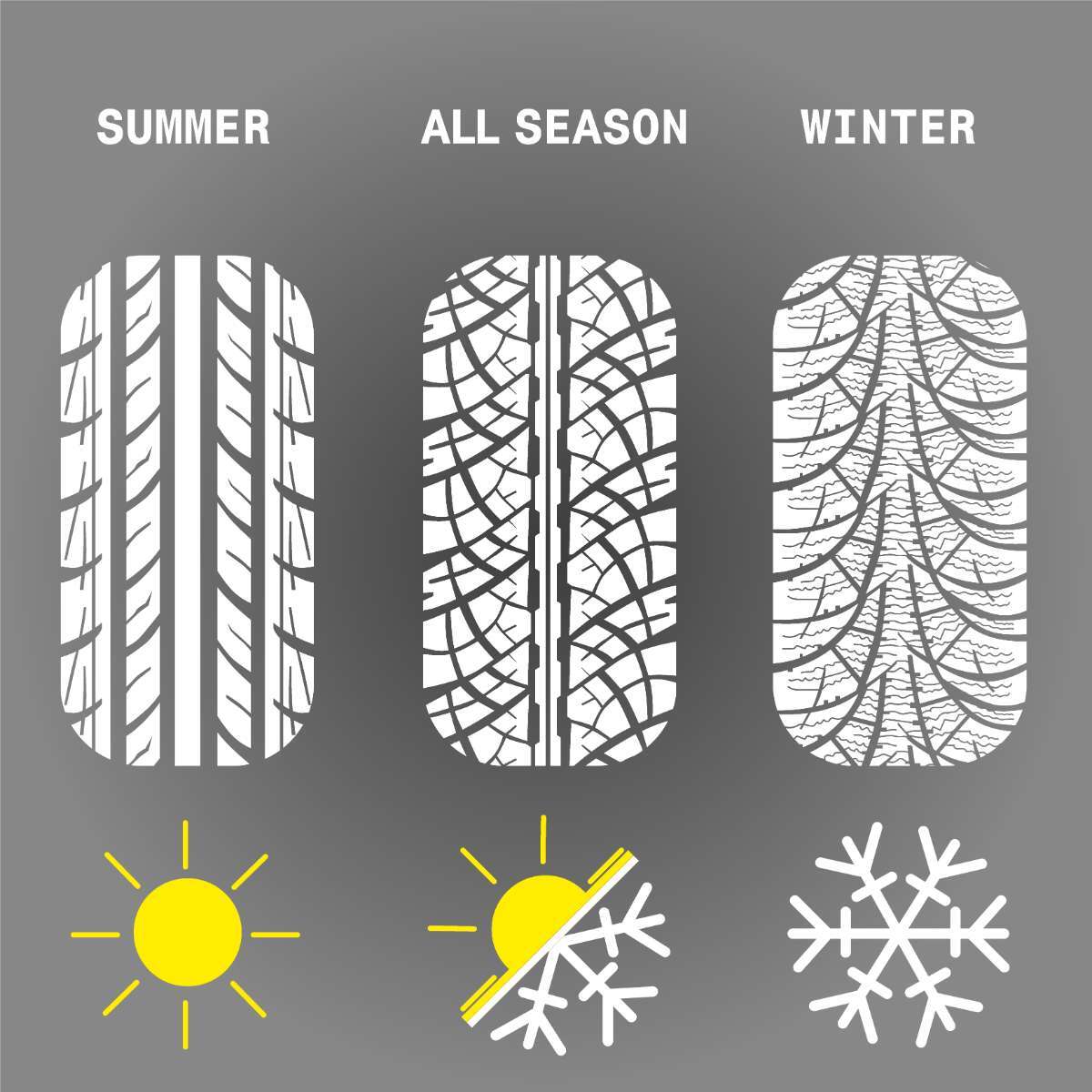Do you want to drive safely and confidently on the road? Then make sure that the tires you use are suitable for the season. The following guide will help you understand the difference between summer, winter and all-season tires.
What is the difference between tires?
Summer and winter tires have their own tread patterns. All-season tires combine the technologies of both. Below is more information about each of them:
Advantages of summer tires
Summer tires are designed for temperatures above +7 °C.
Thinner tread patterns
Good braking on dry and wet roads
Precise turning and stopping
Works effectively in hot climates up to +40 °C
When to use?
Can be used in spring, summer and early autumn, or all year round in areas where frost does not occur.
Benefits of winter tires
Winter tires are designed for temperatures below +7 °C and severe weather conditions (snow, ice).
Wider, deeper tread grooves
Provide traction on icy and snowy roads
Soft rubber material remains elastic in the cold
Provides safe driving on snow and ice
Important: Using winter tires in summer leads to their rapid wear, increased fuel consumption and reduced safety.
Advantages of all-season tires
All-season tires combine the advantages of summer and winter tires.
Operate at temperatures from -10 °C to +30 °C
Safe on both snowy roads and hot asphalt
No need to replace them throughout the year
When to choose?
In the conditions of Uzbekistan, these tires can be safely driven in winter.
Summary
Alternating between summer and winter tires is important for safe and efficient driving in all weather conditions. If temperatures consistently drop below 7°C, switch to winter tires; otherwise, continue using summer tires. If weather conditions are mild and stable, all-season tires provide safe and efficient driving all year round. Choosing the right tire is essential for road safety and fuel economy. ASKO chain stores offer the types of tires listed above, and you can choose the right one for you at any of our branches along the way. To learn more about ASKO, fill out the application and we will contact you!
What is the difference between tires?
Summer and winter tires have their own tread patterns. All-season tires combine the technologies of both. Below is more information about each of them:
Advantages of summer tires
Summer tires are designed for temperatures above +7 °C.
Thinner tread patterns
Good braking on dry and wet roads
Precise turning and stopping
Works effectively in hot climates up to +40 °C
When to use?
Can be used in spring, summer and early autumn, or all year round in areas where frost does not occur.
Benefits of winter tires
Winter tires are designed for temperatures below +7 °C and severe weather conditions (snow, ice).
Wider, deeper tread grooves
Provide traction on icy and snowy roads
Soft rubber material remains elastic in the cold
Provides safe driving on snow and ice
Important: Using winter tires in summer leads to their rapid wear, increased fuel consumption and reduced safety.
Advantages of all-season tires
All-season tires combine the advantages of summer and winter tires.
Operate at temperatures from -10 °C to +30 °C
Safe on both snowy roads and hot asphalt
No need to replace them throughout the year
When to choose?
In the conditions of Uzbekistan, these tires can be safely driven in winter.
Summary
Alternating between summer and winter tires is important for safe and efficient driving in all weather conditions. If temperatures consistently drop below 7°C, switch to winter tires; otherwise, continue using summer tires. If weather conditions are mild and stable, all-season tires provide safe and efficient driving all year round. Choosing the right tire is essential for road safety and fuel economy. ASKO chain stores offer the types of tires listed above, and you can choose the right one for you at any of our branches along the way. To learn more about ASKO, fill out the application and we will contact you!
